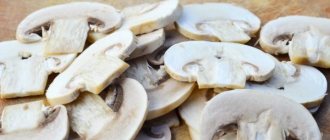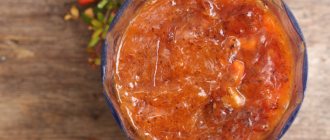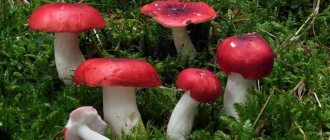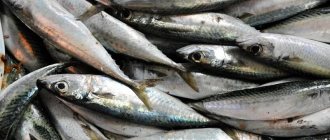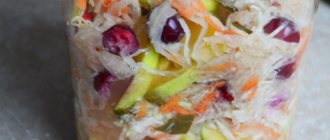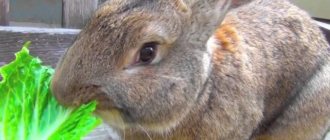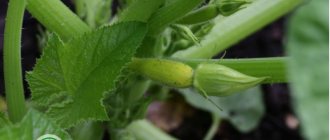Rabbits are one of those animals that can eat almost constantly. At home, they are usually fed 5-6 times a day. They eat quite a lot of food, most often grass and the most common vegetables in the region. This is why feeding rodents is not expensive.
The article will tell you whether it is possible to give pumpkin to rabbits, whether it will be useful, and how exactly to introduce it into the diet of long-eared pets.
Properties of pumpkin
Pumpkin, in addition to its unconditional taste, also has a number of beneficial properties. It contains a large amount of vitamins, minerals, proteins, amino acids and dietary fiber.
It is known for the following qualities:
- positive effect on the nervous system (normalization of sleep, increased attentiveness, decreased irritability);
- helps get rid of fatigue, depression and nervous exhaustion;
- prevents early aging of the body;
- is a powerful cancer prevention and natural antibiotic;
- has a good effect on vision and blood clotting;
- prevents obesity and helps rid the body of excess fluid;
- Due to its low fiber content, it normalizes the functioning of the digestive system.
The calorie content of the product is 26 kcal per 100 grams.
Compound
Like many foods, pumpkin consists of proteins, fats, carbohydrates, micro- and macroelements, vitamins and minerals.
Quantitative composition:
- proteins – 2 g;
- carbohydrates – 7 g, of which sugar accounts for 3 g;
- fats – 0.2 g;
- sodium – 1.5 mg;
- potassium – 350 mg;
The vegetable is not recommended for use in case of stomach diseases.
Contraindications and adverse reactions when feeding
They give juicy vegetables correctly. When feeding zucchini, pumpkin and cucumbers, remember about adverse reactions and contraindications. Digestive problems are possible: diarrhea, vomiting, poisoning. Sometimes other disorders, diseases, and growth retardation are observed. To avoid all this, follow several rules:
- Do not give cucumbers, zucchini, and pumpkin to rabbits before 1.5–4 months. The body and digestive system must be ready for plant foods.
- Vegetables are prepared - inspected, washed, dried. Remove dirt and throw away food contaminated with parasites and fungi. Wet foods lead to digestive disorders.
- Do not give canned or salted vegetables. Be careful with greenhouse products, which often contain harmful nitrates.
- They don't fry. Do not mix with some products. For example, fried seeds, sweets, and cheese are not suitable for this. There are problems with the gastrointestinal tract.
- They give a little. Juveniles are enough 2-3 times a week in moderate quantities. Otherwise, rabbits do not have enough necessary substances. Hence the developmental delay, disorders, and illnesses.
Juicy food is an essential part of a rabbit's diet. Zucchini, pumpkin, cucumbers and other vegetables are very useful for animals. However, everything is good in moderation.
Benefits for rabbits
It is imperative to feed rabbits pumpkin. Of course, in addition to it, other products should be present in the diet.
The benefits of eating this vegetable are:
- contains many vitamins and minerals that help maintain animal health and productivity;
- improves the condition of the coat;
- the musculoskeletal system and teeth are strengthened.
Males
In male rabbits, eating pumpkin has a beneficial effect on the quality of sperm and, ultimately, on the health of the offspring.
Nursing rabbits
Eating this vegetable has a positive effect on the speed and quality of lactation. Milk is saturated with useful elements, becomes fattier and more nutritious. Thanks to this, the newborn rabbit will not experience a deficiency of vitamins and essential nutrients.
Meat breeds
For meat breeds, eating pumpkin is especially beneficial; it affects the quality of meat, filling it with proteins and microelements.
How to feed
Despite all its unconditional benefits, the vegetable must be introduced into the diet in compliance with certain rules.
The following factors should be considered:
- age;
- habitat and climatic conditions (it is advisable to choose those vegetables and fruits that grow in the region where the individual lives);
- season.
It is necessary to provide rabbits with a balanced and varied diet, including greens, vegetables, fruits and animal feed.
Optimal age
The introduction of pumpkin complementary foods is acceptable for rabbits over 4 months of age. Only from this age are their stomachs ready to digest such a product. Until this time, they ate mainly mother's milk and green grass.
How to introduce it into the diet
Before introducing a new product, you need to stock up on it for a couple of months. It is strictly not recommended to accustom rabbits to a certain food, and after a short time completely exclude it from the diet.
Please note the simple rules for introducing pumpkin food:
- Vegetables must be fresh, not spoiled, without rotten areas.
- Before using or cooking, you need to rinse the product.
- The seeds are removed from the pulp, since eating them in their entirety is harmful to the digestive system of rabbits. However, carefully crushed seeds make it possible to treat and prevent infestation by worms.
- If the vegetable is young, then the skin can be left. Old pumpkins should be cleaned.
- The pulp should be cut into slices or mashed. For the first feeding, the second option is preferable.
You should not overuse the vegetable. It is much better to use it as an addition to main dishes or just as a treat.
Recommended rate
The amount of feed consumed per day varies depending on the age of the animal, time of year and gender. A pregnant and lactating rabbit needs increased nutrition. A special diet is being developed for newborn and young rabbits. In winter, the amount of food increases, as the body’s energy costs for thermoregulation processes increase.
Since pumpkin is an additive to main dishes, its content together with other vegetables should not exceed 20-25% of the total diet. It is better to give once a day in the morning or afternoon. Overeating can cause digestive problems.
What other vegetables and fruits are fed to rabbits?
Fruits and vegetables are not the main food for rabbits, they are used only as a supplement. They are given in small quantities along with grass and grain feed.
Attention! Do not feed your animals zucchini along with apples: various fruits and vegetables can cause the formation of gas and bloating in a rabbit.
Pears
Rabbits love these fruits, but a large amount of them leads to stomach upsets. You can give them no more than 80 g per individual. It’s not worth giving store-bought fruits at all: they are treated with chemicals to increase their shelf life.
Be sure to read:
What grass do rabbits like and eat, what grass should they not be given, how much hay do they need
Before feeding the babies, the seeds are removed from the fruit and the fruit is crushed. Pears should not be fed together with hay and fruit.
Berries
In summer and autumn, many melons and watermelons appear in the southern regions. Their tender pulp has a slight laxative effect, which is useful for constipation. The berries should be washed well before feeding and cut into pieces. Vineyard owners are used to feed substandard berries and remove fresh herbs.
Fermented and spoiled foods are contraindicated for animals. You cannot feed rabbits with melon tops before the harvest begins: the plantation may be treated with chemicals.
Roots
Potatoes contain a lot of easily digestible carbohydrates and a small amount of fiber. Eating vegetables improves stomach function, sperm quality in males and lactation in female rabbits.
But potatoes contain a lot of starch, which causes animals to quickly gain weight and begin to store fat. For this reason, you should not get carried away with this food. Only boiled potatoes should be fed. Raw contains poisonous solanine.
In winter, carrots are an important supplier of vitamin A. Adults are given them whole; babies are fed chopped root vegetables.
Fodder beet is useful for improving blood composition and metabolism; it is given both raw and as silage.
In what form to give
To understand whether rabbits eat pumpkin, you need to try introducing the product in the form of boiled puree. If the experiment was successful, you can experiment with fresh vegetables, adding them to feed and compound feed.
Raw
The benefits of raw vegetables are maximum. To use it, you need to chop it very finely or grate it. Thanks to this, food is chewed longer and more thoroughly, which is very beneficial for the digestive tract of rodents.
Boiled (in the form of puree)
Boiled pumpkin is good for the first feeding of young animals.
One of the options for preparing rabbit treats:
- Bake in the oven.
- Grind the pulp thoroughly.
- Cool to room temperature.
Addition to feed
If rodents do not like pumpkin in its pure form, then it can be boiled and added to silage or mixed feed. This allows you to improve the taste of food and increase its nutritional value and calorie content.
Collection and storage
Melon vegetables do not require special storage conditions. However, it is recommended to observe some nuances in order to preserve the beneficial properties to the maximum.
Blank
There are long-term and short-term preparations. The duration of the latter is up to 10 days. To prepare the product for a short shelf life, you need to cut the pumpkin, wash it and get rid of the seeds. After this, wrap in cling film and put in a cool place.
For long-term procurement, you need to carry out the following actions:
- Select fruits, preferably medium size. The presence of a fruit stalk is required.
- Wash and then dry each vegetable.
- Leave until the fruit stem dries (this will be indicated by a change in its color), then transfer to a cool place.
Storage
Regardless of the period, it is necessary to choose the right storage location. It is highly not recommended to keep melons on concrete or plastic; wooden containers are better suited. If you don't have any, old blankets or plywood will do.
For long-term storage, you should choose a place with minimal illumination, constant levels of temperature and humidity.
Zucchini in the diet of rabbits
This pumpkin relative is also a healthy food to include in your rabbits' diet. However, the positions of livestock breeders regarding its benefits for the animals’ bodies differ.
Compound
100 g of zucchini contains:
- proteins – 0.5-0.8 g;
- fats – 0.2-0.5 g;
- carbohydrates – 4.3-4.8 g;
- water – 92-95 g;
- total share of vitamins – 5 g;
- total share of microelements – 1 g;
- total share of macroelements – 2 g.
The vegetable is rich in vitamin C. At the same time, both beneficial and harmful properties are highlighted. It is very important not to overuse it to eliminate the risk of negative effects.
Benefits for rabbits
Rabbits usually eat zucchini with pleasure. The main benefit of this vegetable lies in the content of vitamins B and C, iron, calcium and phosphorus, and valuable amino acids. It helps to diversify the diet and saturate it with substances necessary for health.
How to give correctly
The rules for introducing zucchini into the diet of rabbits are the same as when adding pumpkin. You need to ensure the cleanliness of the vegetable peel and its freshness. Control the frequency of use. It is also not recommended to introduce it into complementary feeding for rabbits under 2 months of age.
It can be used either raw or as a puree or mixed with the animal’s main food.
Is it possible to give leaves?
Eating raw leaves by rabbits negatively affects their digestive system and should be done very carefully and in moderation.
To turn on the tops you need to:
- Wash and chop the leaves.
- Place them in boiling water.
- Leave for 15 minutes.
- Dry and cool.
Afterwards they are mixed with the main types of food.
Feeding rules
We’ve sorted out the possibility of including the product in the little ears’ diet. Now it is important to understand at what age it is best to introduce a juicy vegetable, as well as in what quantity. Equally important is the processing of the product, or lack thereof.
At what age can you
It is best to introduce zucchini to babies from the age of 1.5–2 months. By this period, their digestive system is already sufficiently adapted and strong to tolerate succulent food without problems. However, some rabbit breeders prefer to delay introduction to the product until four months of age.
How to give
Before feeding adult zucchini, the zucchini must be thoroughly cleaned of soil and dirt, washed, and the skin must not be cut off. The vegetable must be given unprocessed. Rabbits eat with appetite both fully ripe and slightly unripe fruits.
For convenience, the zucchini can be cut into small slices or cubes. To feed babies, the fruits can be peeled, and overripe specimens can be additionally cleaned of seeds.
Despite the enormous benefits of the vegetable, it is strictly forbidden to switch a rabbit to a zucchini diet, since one type of product will not be able to satisfy the body’s need for nutrients.
Is it possible to give pumpkin along with zucchini?
Giving rabbits zucchini and pumpkin in one dish is not only possible, but necessary. In this case, the beneficial properties of these vegetables are combined. You can add them to the main food in the form of puree. Being in one dish, vegetables will perfectly complement each other not only in quality, but also in taste.
Pumpkin and zucchini must be present in the diet of long-eared animals. It is important to remember the rules for introducing and storing these vegetables.
Will zucchini be useful?
Often, beginners are faced with the problem of whether it is possible to give zucchini and pumpkin to rabbits. Oddly enough, veterinarians have differing opinions on this matter. Some believe that these products should be an integral part of the rabbits’ diet, while others, on the contrary, advise to beware of such vegetables and minimize their amount in the diet, to find other vegetables that will provide the same necessary dietary supplements for rabbits.
But still, most veterinarians are confident that rabbits can eat zucchini and pumpkin, but pumpkin for rabbits must be added carefully, since this product acts as a laxative. In addition, it is very useful to give tops, cucumbers, and lettuce leaves. You can also give dried pumpkin seeds: they contain many useful vitamins, which have a positive effect on blood flow in the body. Zucchini and pumpkin have beneficial properties:
- vitamins;
- macroelements;
- microelements.
All of them are necessary for rapid development. It is recommended to give such products both raw and boiled. But there are rules by which pets should be fed:
- rabbits can be given zucchini and pumpkin, but only to those who are already 4 months old;
- It is necessary to remove the skin from the products and remove all seeds;
- It is best to chop or grate the pulp of the products and then mix with corn silage.
Rabbit breeders should pay great attention to seeds, which must be removed when preparing vegetables for serving. The seeds are considered an excellent anthelmintic of natural origin, so you can add a little to the diet of rabbits as a preventive measure against worms.




